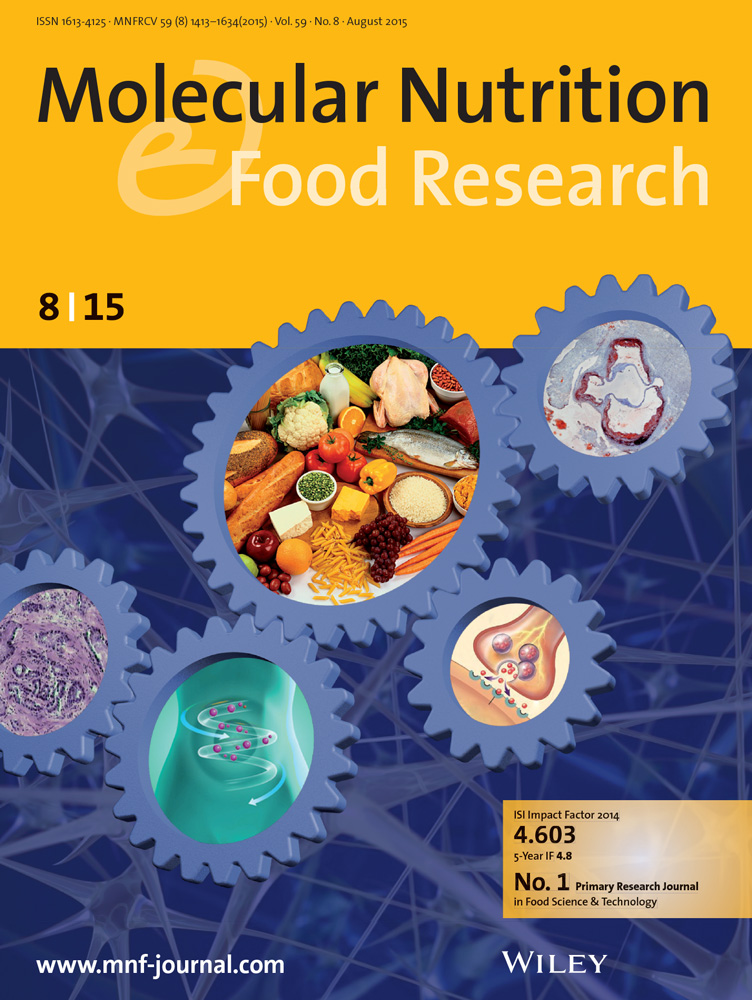芝士蛋糕产品中藻蓝蛋白、花青素和β蓝蛋白的植物化学和物理稳定性研究。
IF 4.2
2区 农林科学
Q1 FOOD SCIENCE & TECHNOLOGY
引用次数: 0
摘要
在食品工业中,颜色被认为是最重要的感官属性。虽然传统上使用合成色素来确保食品的颜色一致,但对其可能的毒性和环境影响的担忧日益增加,导致人们转向使用天然的生物基色素。本研究探讨了芝士蛋糕产品中三种天然着色剂(藻蓝蛋白、花青素和β蓝蛋白)的植物化学稳定性,以及它们与各种甜味剂(蔗糖、果糖、山梨醇、葡萄糖和木糖醇)的相互作用。分析了馅料和饼的植物化学成分、颜色和抗氧化性能。藻蓝蛋白和花青素-3-葡萄糖苷在所有甜味剂中证实了强大的稳定性。相比之下,木糖醇加糖的芝士蛋糕的β花青素含量最高(7.81 mg/g),并在5天的保质期内保持不变(p >.05),而葡萄糖加糖的芝士蛋糕的β花青素含量为7.07 mg/g。与木糖醇和山梨醇相比,葡萄糖和果糖显著提高了稳定性和抗氧化性能。这些发现表明,甜味剂的选择在保持芝士蛋糕馅料的稳定性和增强健康益处方面起着至关重要的作用,为开发含有天然着色剂的功能性食品铺平了道路。本文章由计算机程序翻译,如有差异,请以英文原文为准。
Exploring the Phytochemical and Physical Stability of Phycocyanin, Anthocyanins, and Betacyanin in a Cheesecake Product.
Color has been recognized as a paramount sensory attribute in the food industry. Although synthetic colorants have traditionally been used to ensure consistent color in food products, growing concerns about their possible toxicity and environmental impact have led to a shift toward using natural, biobased pigments. This study explored the phytochemical stability of three natural colorants (phycocyanin, anthocyanins, and betacyanin) incorporated in a cheesecake product and their interactions with various sweeteners (sucrose, fructose, sorbitol, dextrose, and xylitol). The fillings and cakes were analyzed for their phytochemical composition, color, and antioxidant properties. Phycocyanin and cyanidin-3-glucoside confirmed robust stability across all sweeteners. In contrast, xylitol-sweetened cheesecake retained the highest betacyanin concentration (7.81 mg/g) and maintained it over the 5-day shelf life (p > 0.05), compared to dextrose-sweetened samples (7.07 mg/g). Dextrose and fructose significantly enhanced the stability and antioxidant properties compared to xylitol and sorbitol. These findings suggest that the choice of sweetener plays a crucial role in maintaining the stability and enhancing the health benefits of cheesecake fillings, paving the way for the development of functional foods with natural colorants.
求助全文
通过发布文献求助,成功后即可免费获取论文全文。
去求助
来源期刊

Molecular Nutrition & Food Research
工程技术-食品科技
CiteScore
8.70
自引率
1.90%
发文量
250
审稿时长
1.7 months
期刊介绍:
Molecular Nutrition & Food Research is a primary research journal devoted to health, safety and all aspects of molecular nutrition such as nutritional biochemistry, nutrigenomics and metabolomics aiming to link the information arising from related disciplines:
Bioactivity: Nutritional and medical effects of food constituents including bioavailability and kinetics.
Immunology: Understanding the interactions of food and the immune system.
Microbiology: Food spoilage, food pathogens, chemical and physical approaches of fermented foods and novel microbial processes.
Chemistry: Isolation and analysis of bioactive food ingredients while considering environmental aspects.
 求助内容:
求助内容: 应助结果提醒方式:
应助结果提醒方式:


